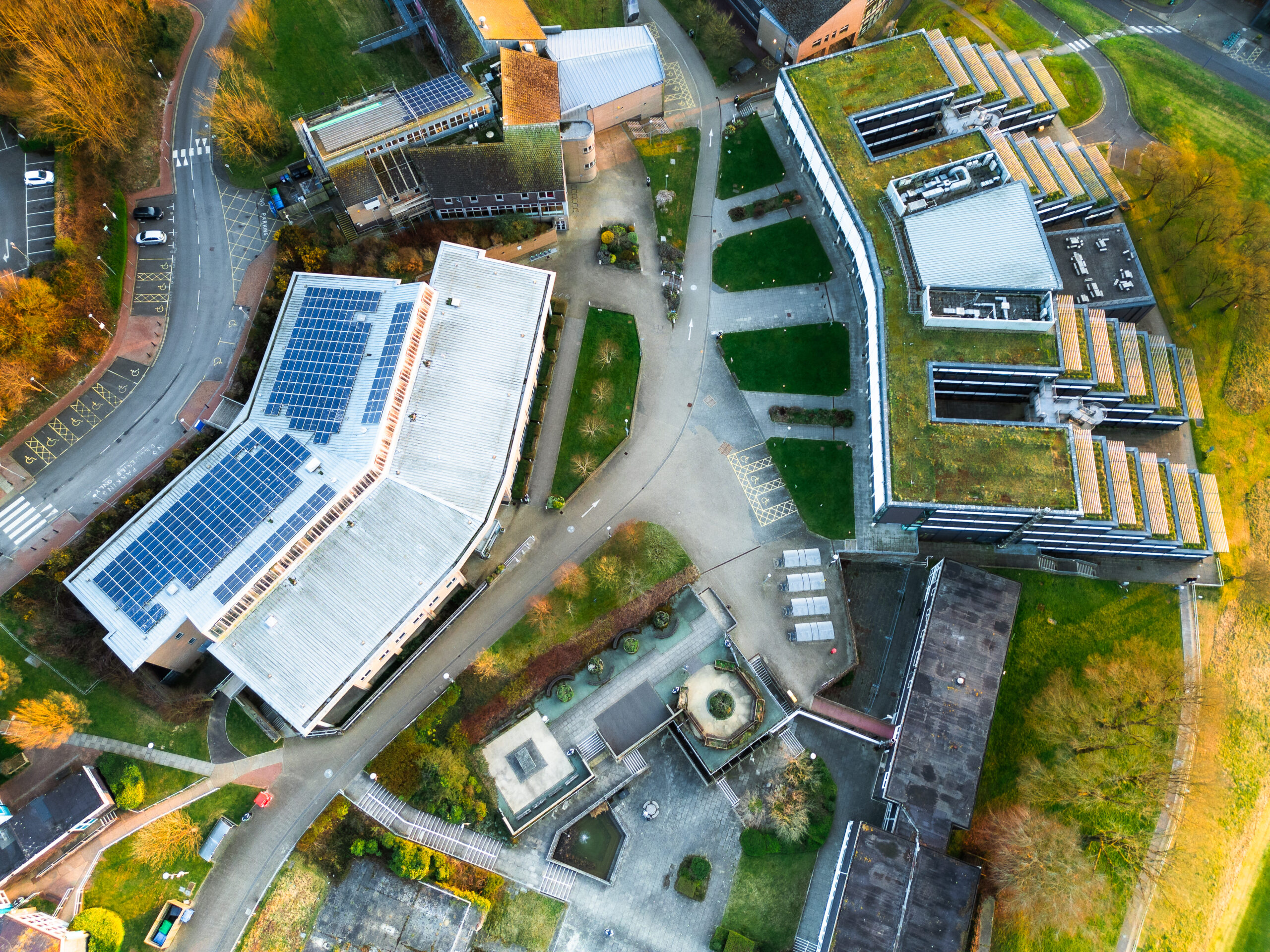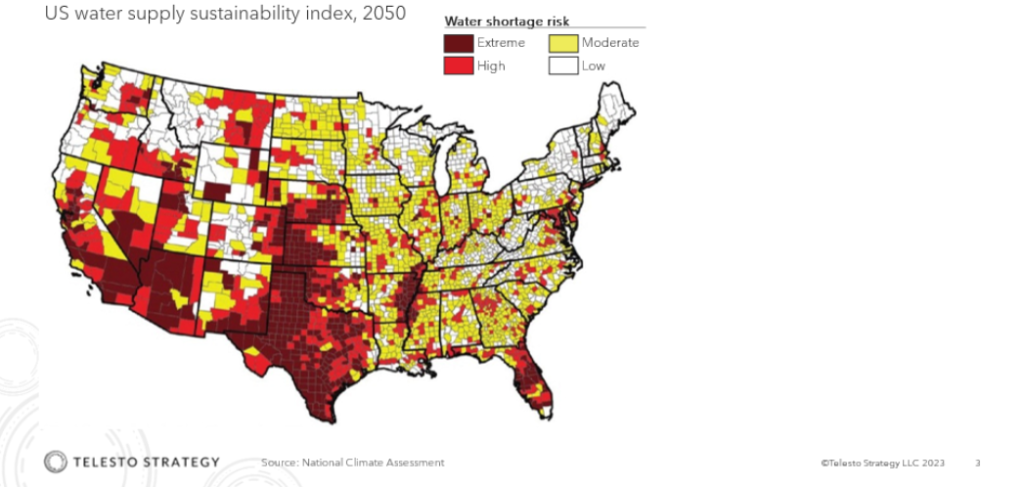
Copyright © 2025 Telesto Strategy, LLC
All rights reserved
Understanding the campus environmental footprint
When people speak about an environmental footprint in higher education they are often referring to four main areas: energy, emissions, water, and waste.
Water: Although not always as highly prioritized as energy and emissions, water plays a critical role in a university’s environmental footprint. With over 30% of US counties expected to be facing high or extreme water stress by 2050, water efficiency is becoming an increasingly important topic on campus. Improving water efficiency, however, requires diligent planning and execution, replacing inefficient appliances and fixtures with more efficient ones as they near end of life, detecting and addressing leaks quickly, and influencing usage behaviors.

Contact Us
In this new environment, clarity, and strategy matter more than ever. If your institution is wrestling with how to adapt your sustainability efforts without losing momentum, we’d be glad to help. Contact us to talk through how your peers are navigating similar questions and what approaches are proving effective.

Partner, Washington DC
With a background spanning both urban planning and real estate development in the United States, Andrew supports sustainability and facilities departments across higher education institutions to develop and execute strategies which enable them to achieve their ambitions while navigating complex stakeholder environments and addressing student and faculty concerns.

Partner, San Francisco
Ben has led sustainability and growth strategy projects for clients across the higher education and real estate ecosystems, including universities and colleges, private real estate companies, PropTech companies, and more. He supports clients on a number of strategic topics such as achieving net zero targets, embedding sustainability and emissions reduction into capital deployment, and capturing sustainable growth opportunities.

Copyright © 2025 Telesto Strategy, LLC
All rights reserved